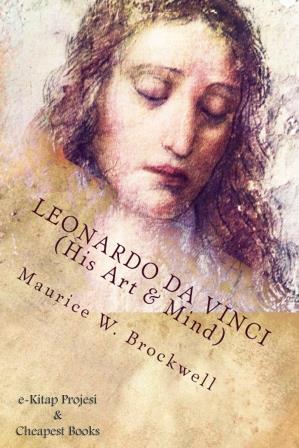More Search Results...
About the Author
“Leonardo,” wrote an English critic as far back as 1721, “was a Man so happy in his genius, so consummate in his Profession, so accomplished in the Arts, so knowing in the Sciences, and withal, so much esteemed by the Age wherein he lived, his Works so highly applauded by the Ages which have succeeded, and his Name and Memory still preserved with so much Veneration by the present Age—that, if anything could equal the Merit of the Man, it must be the Success he met with. Moreover, ’tis not in Painting alone, but in Philosophy, too, that Leonardo surpassed all his Brethren of the ‘Pencil.'” This admirable summary of the great Florentine painter’s life’s work still holds good today.
The influence of Leonardo was strongly felt in Milan, where he spent so many of the best years of his life and founded a School of painting. He was a close observer of the gradation and reflex of light, and was capable of giving to his discoveries a practical and aesthetic form. His strong personal character and the fascination of his genius enthralled his followers, who were satisfied to repeat his types, to perpetuate the “grey-hound eye,” and to make use of his little devices. Among this group of painters may be mentioned Boltraffio, who perhaps painted the “Presumed Portrait of Lucrezia Crivelli” (Plate VII.), which is officially attributed in the Louvre to the great master himself. His Dessendants Signor Uzielli has shown that one Tommaso da Vinci, a descendant of Domenico (one of Leonardo’s brothers), was a few years ago a peasant at Bottinacio near Montespertoli, and had then in his possession the family papers, which now form part of the archives of the Accademia dei Lincei at Rome. It was proved also that Tommaso had given his eldest son “the glorious name of Leonardo.”
Leonardo Da Vinci (His Art & Mind)
Leonardo Da Vinci, the many-sided genius of the Italian Renaissance, was born, as his name implies, at the little town of Vinci, which is about six miles from Empoli and twenty miles west of Florence. Vinci is still very inaccessible, and the only means of conveyance is the cart of a general carrier and postman, who sets out on his journey from Empoli at sunrise and sunset. Outside a house in the middle of the main street of Vinci to-day a modern and white-washed bust of the great artist is pointed to with much pride by the inhabitants. Leonardo's traditional birthplace on the outskirts of the town still exists, and serves now as the headquarters of a farmer and small wine exporter.
More info →
































